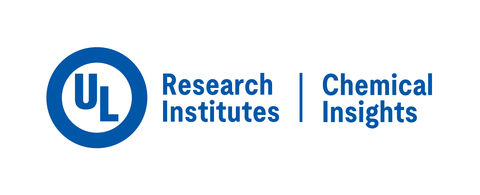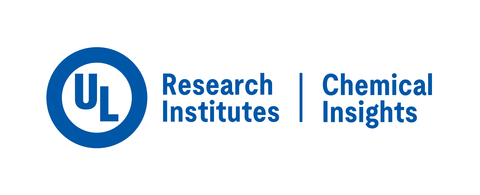Effects of Extreme Heat Explored in New Design Brief
Effects of Extreme Heat Explored in New Design Brief
WASHINGTON--(BUSINESS WIRE)--The American Society of Interior Designers (ASID) has unveiled a design brief exposing the effects of extreme heat on the built environment and its occupants, equipping interior designers with critical knowledge to address the increasing challenges posed by extreme heat. The second design brief produced in a collaborative research partnership with the Chemical Insights Research Institute (CIRI), “ASID Impact of Design Brief: Climate Impacts on Building Resiliency & Human Health” examines the current state of the environment from a chemical landscape perspective and proposes how its three leading topics— climate, building resiliency, and human health— can be better considered in an evolving design practice.
Focusing on extreme temperatures and their effects on the built environment, human health, building resilience, and material emissions, the brief explores the complex relationship between environmental conditions, material performance, and occupant health, empowering professionals to make informed decisions that enhance safety, comfort, and sustainability.
“As interior spaces serve as a crucial buffer between people and the outside environment, this research underscores the need for innovative design strategies that prioritize resilience and health outcomes in the face of a changing climate,” said Khoi Vo, chief executive officer, ASID. “We are grateful to our partners at CIRI for helping us bring this valuable research to the interior design professionals, helping practitioners better understand these ongoing challenges and contemplate how the industry can better adapt and contribute to the built environment that improves human health and building resiliency.”
“Extreme weather events can impact a building’s resilience and the health of the people inside,” said Marilyn Black, Ph.D., vice president and senior technical advisor for CIRI. “Because interior designers play such a critical role in specifying materials, their selections can have a significant impact on mitigating the effects of weather disasters. We are grateful to ASID for helping us share this research with their network in the design community."
Severe weather and the extreme temperatures that can result from weather events can affect occupants and common building materials, resulting in indoor pollution, higher levels of volatile organic compounds (VOCs), and negative impacts on materials that cause emissions. This new brief examines how these factors impact exposure risks that can lead to heat-related illness, cardiovascular diseases and asthma and allergy-related illness, and offers interior designers deeper data to minimize climate-related risks and impact on the built environment. Notable findings include:
Extreme temperatures are associated with higher levels of volatile organic compounds (VOCs) and semivolatile organic compounds (SVOCs). VOCs are emitted as gasses from certain solids or liquids and include a variety of chemicals, some of which may have short and long-term adverse health effects.
According to the U.S. Environmental Protection Agency (EPA), the ability of organic chemicals to cause health effects varies greatly from those that are highly toxic, to those with no known health effect, and as with other pollutants, the extent and nature of the health effect will depend on many factors including level of exposure and length of time exposed.
Incidents of heat-related illness and death, cardiovascular illness, asthma, allergen illnesses, and stress-related disorders are on the rise, and they have a greater impact on our most vulnerable populations, including those with existing health disparities and those with less access to resources.
Environmental conditions significantly influence material emissions, including those from natural materials, which reflect the conditions of their origin. This creates a complex issue, as not all materials behave the same way under varying environmental conditions, and even similar materials can exhibit different behaviors depending on their composition.
The report concludes with a forward-facing look at how interior designers can improve building resiliency and mitigate heat-related outcomes for occupants. These strategies are:
Use an integrative design approach. Bring the owner, design team, and other experts and stakeholders together early in the design process to establish goals, set priorities and identify occupant risks.
Proactively evaluate potential impacts. Prioritize materials, finishes and furnishings that minimize risks to human health to reduce indoor pollution and achieve greater resiliency.
Convey strategies and assess outcomes. Communicate to ensure alignment, engage stakeholders and demonstrate results for greater transparency and trust. Furthermore, monitor outcomes by recording both qualitative and quantitative effects on users to reconsider occupant risk.
For more information on the “ASID Impact of Design Brief: Climate, Building Resiliency & Human Health,” visit: https://www.asid.org/resources/resources/view/resource-center/358
About ASID
The American Society of Interior Designers believes that design impacts lives. Through its programs, networks, and advocacy, ASID serves all those who are a part of the interior design profession and practice. This support extends to their membership, encompassing practitioners of all levels of training across all sectors of design, to Affiliate Members and Partners to represent all contributors to the built environment. ASID thrives on the strength of cross-functional and interdisciplinary relationships among designers of all specialties, including workplace, healthcare, retail and hospitality, education, institutional, and residential. As a leader in shared conversations around topics that matter in design, from evidence-based and human-centric design to social responsibility, well-being, and sustainability, ASID showcases the impact of design on the human experience and the value interior designers provide.
ASID will mark its 50th anniversary in 2025. Celebrating 50 years of industry leadership, ASID is committed to broadening the impact for the future of design in all of the places we work, play, and heal. Learn more at asid.org.
About Chemical Insights Research Institute
Chemical Insights Research Institute (CIRI) of UL Research Institutes is a nonprofit organization dedicated to scientific research, publication, education, and communication on environmental exposures resulting from technologies and practices, their impact on human health, and processes for reducing health risks. CIRI provides actionable data and resources to help manufacturers, educators, healthcare providers, and consumers make informed environmental health decisions and risk reduction strategies for the protection of human health.
About UL Research Institutes
UL Research Institutes is a nonprofit research organization dedicated to advancing public safety through scientific discovery. Since 1894, our research has advanced our mission toward a safer, more secure, and sustainable future. Focused on global risks from fire mitigation and air quality to safe energy storage and digital privacy, we conduct rigorous independent research, analyze safety data and partner with experts to uncover and act on existing and emerging risks to human safety.
Contacts
Bert Kelly
Chemical Insights Research Institute of UL Research Institutes
Bert.Kelly@ul.org
1-470-957-7854
Nicole Chacon, Associate Account Director
Novità Communications
nicolechacon@novitapr.com


